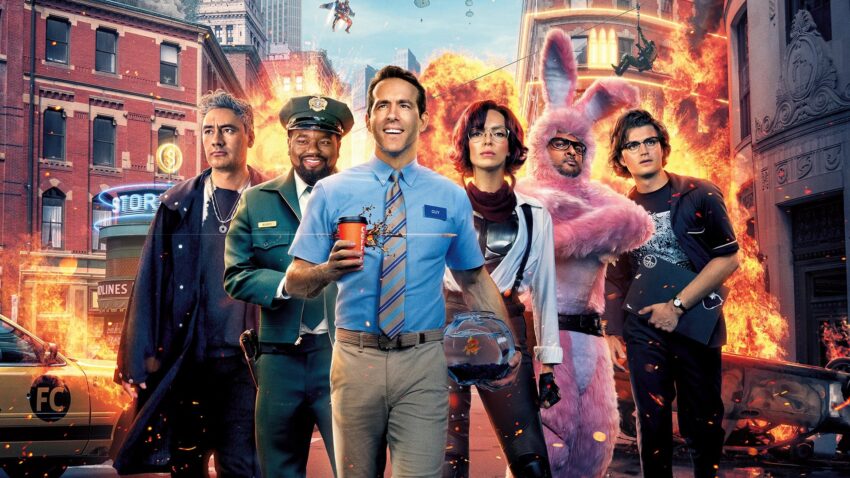There are few scenes as powerful as your climax. No matter how well done the rest of your work is, a poorly paced climax will leave your readers disappointed with your book. On the other hand, a page-turning climax can cover a multitude of flaws in your story. In short, your readers’ conception of your entire book is determined by the few scenes near the end with the highest conflict.
Without tension, these moments fall flat. I’ve turned action movies off in the middle of the climax because the conflict didn’t have a significant impact on the characters, the world, or me as the viewer. But truly page-turning, suspense-filled climaxes can become the most memorable parts of your novel. The final battle will form the mental image your readers remember your story by, becoming the crux of the entire story.
With all that’s riding on these scenes, there are a few different techniques you can pull out to make sure they go the farthest and leave the greatest impact on your readers. But one that we haven’t yet discussed is seen clearly in the 2021 action-comedy, Free Guy.
Free Guy
Guy is just about as unique as his name — he’s just another non-playable character (or NPC) in a videogame full of them. Just like his fellow NPC’s, he has a simple routine, a straightforward code, and just one thing to keep him interesting and set him apart from the others: a unique desire.
Each of the NPC’s has one. They’re meant to never be fulfilled, instead keeping them in a cycle of getting up every morning, living, working, and hoping for something that they themselves know will never happen.
Guy’s unique desire just happens to be a person: He wants to meet the girl of his dreams.
And then he does.
She’s a player in the virtual world, and she’s everything Guy wanted — cool, calm, and a passionate lover of bubblegum ice cream. In the real world, she’s a video game developer named Millie who works with her best friend Keys to design hyper-intelligent video games. At least they did, before their code was stolen by a greedy CEO known as Antwan and used to build the game Guy currently lives in.
Guy’s programming begins evolving to accommodate a circumstance that was never supposed to happen in the first place, setting off a chain reaction in NPC’s around him. Because Guy’s desire was proven to be attainable, the others begin to wonder if their personal desires are, as well, and they begin rewriting their own code to achieve their unique goals.
Antwan didn’t realize the code he stole was capable of artificial intelligence, and Guy’s evolution could prove that he stole the code — costing Antwan his business, his money, and his reputation. He sets out to destroy the game that made him his fortune, so that Guy and his friends can never spread the truth.
Millie and Keys won’t let that happen. Keys sneaks into Antwan’s headquarters to stop the shutdown in the virtual world, while Millie distracts Antwan by confronting him in the physical one. Meanwhile, Antwan rallies his coders to design enemies meant to destroy Guy and his friends. When Keys successfully prevents Antwan from completing the game shutdown, he takes matters into his own hands, smashing the servers that the video game runs on. Millie pursues him, hoping to distract him and protect Guy and the others. At the same time, Guy faces the upgraded version of himself — muscly, superpowered, and with only one goal: to destroy Guy and his friends.
Writing a MultiLayered Climax
One of the challenges many authors face is the fact that when writing, for the most part multiple things can’t happen at once. You can’t split the screen or jump between scenes every other line. If you have multiple perspectives or timelines, they’re just going to have to be broken up into segments that are digestible to readers.
But many writers face the temptation to over-apply this logic. So many authors write their climax as a series of heightened battles, one after the other, and to be fair, this works for writing the majority of your book. A plot, after all, is just a series of interlocked events that lead into each other. Having everything happen all at once for an entire book would be confusing and ultimately detrimental for your story as a whole.
But this principle changes when you hit big plot beats — like the midpoint and climax. When these come around, writing a multilayered climax will bring with it heightened suspense. Instead of dragging your story down and needlessly complicating it, it actually becomes an asset. Rather than allowing your characters to face conflicts one at a time, throw multiple battles at them at once from all different angles.
I’ve seen few movies with as much tension and suspense packed into their climax as Free Guy. Despite being a videogame movie and spending a significant amount of screentime in the virtual world, the climax comes with real-world implications that could mean life or death for multiple of the characters. And the reason these implications hit home is because of the heightened suspense made possible by the multi-layered setup.
Rather than letting Keys conquer Antwan online, before Millie faces him in the physical world, ending in Guy’s battle with his alter ego in the digital world, the writers combined these conflicts so that they took place at the same time. This pacing significantly increased the suspense of the climax.
If any of them fail, Guy and his friends will be lost. Keys has to prevent Antwan from shutting down the videogame online, Millie must stop him from smashing the servers in the real world, and Guy has to protect his friends from the superpowered enemy Antwan has created to destroy them. While watching each of these challenges take place individually would have been interesting, allowing them to coincide generated heightened suspense that you simply can’t get any other way.
When facing down a climax taking place across multiple conflicts, don’t be afraid to let those conflicts coincide and interact. Let your political crisis take place at the same time as your characters’ personal confrontation. Allow the final battle to rage while the rightful heir challenges your villain for the throne. Don’t limit the tension of your climax by cutting your conflict into manageable bites for your characters. This is your characters’ final stand — their last chance to be truly tried and tested beyond what they could have imagined was possible. Give them more than they can handle, all at once, so that their true strength of character shines through in spite of it all.



Let us know:
What multi-level climaxes have you enjoyed? Do you have one planned for your current WIP?


Hi! My name is Mara, and I’m a Christian artist, violinist, and blogger. I remember the day that I decided that I would learn something new about what makes a good story from every book I picked up — whether it was good, bad, or a mixture of both. I use this blog as a way of sharing some of the tips and tricks I’ve learned, and highlight which books, cartoons, and movies have taught me the most about writing an awesome story.


Hmm multiple conflicts at the same time in the climax? Who could possibly pull that off? *ATLA Intro Begins*
Yup! Avatar was a really great example of this, as well.